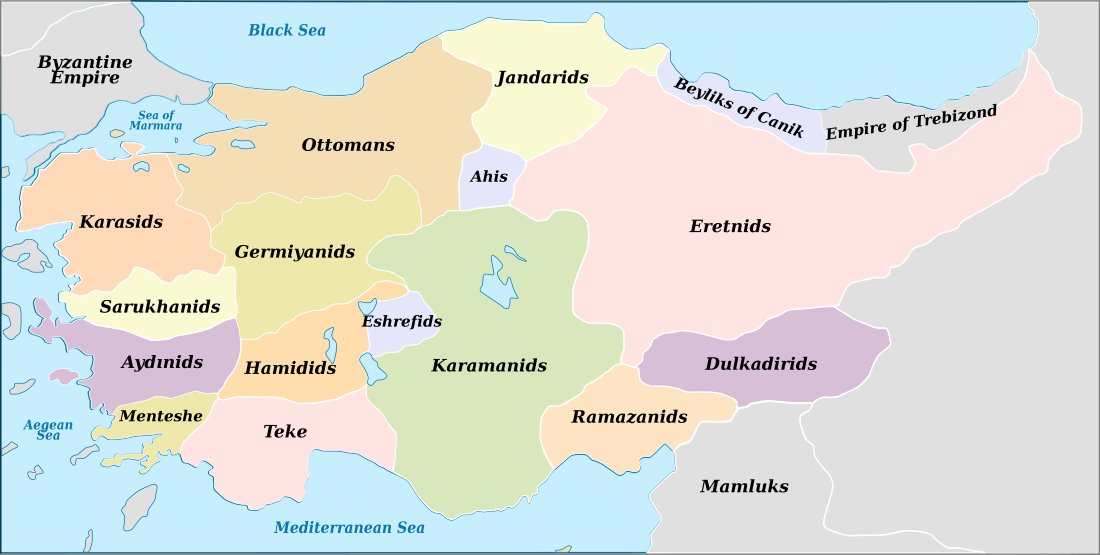Top Qs
Timeline
Chat
Perspective
Beylik of Dulkadir
Turkish principality in Anatolia, between 1337-1522 From Wikipedia, the free encyclopedia
Remove ads
The Beylik of Dulkadir (Turkish: Dulkadiroğulları Beyliği) was one of the Turkish Anatolian beyliks (principality) established by the Oghuz Turk clans Bayat, Afshar, and Begdili after the decline of Seljuk Sultanate of Rûm.
Remove ads
Etymology
Summarize
Perspective
The meaning of Dulkadir is unclear. It was later Arabized or reinterpreted according to folk tradition as Dhu'l-Qadr, which means 'powerful' or 'mighty'.[4] According to 16th-century German historian Johannes Leunclavius, Dulkadir was a corruption of the Turkic name Torghud. Franz Babinger considered it very probable, as the name was likely derived from some Turkish name, further suggesting that this would also mean the dynasty of Dulkadir is related to the Turkoman Turghudlu tribe.[5] On the other hand, Annemarie von Gabain proposed tulga-dar (lit. 'helmet-bearer') as the original Turkic word it sprang from.[6] According to Turkologist Louis Bazin, the name may be rooted in the term "dolga," which means "to hurt" or "to agonize". Historian Faruk Sümer suggested that Dulkadir could be the Turkmen pronunciation of the Muslim given name Abdul Qadir, parallel to how the Ilkhanate ruler Abu Sa'id (r. 1316–35) was known as "Busad" by his Turkmen subjects. Another historian, Refet Yinanç, supported Sümer's view.[7]
Medieval Armenian authors referred to the Dulkadirids as Tulgharts'i, Tulgharats'i, Dulgharats'i, Tulghatarts'i, or Dulghatarts'i.[8] While Persian sources spelled Dulkadir as Zulkadir, Arabic sources spelled it as Dulgadir or Tulgadir. Ottoman sources used a combination of Zulkadir and Dulkadir.[9]
Remove ads
History
The principality was founded by Zayn al-Din Qaraja, a Turkoman chieftain, likely from the Bayat tribe,[10] who established himself in the region of Elbistan in 1335, taking the town in 1337 and obtaining the title of na'ib from the Mamluk Sultan Al-Nasir Muhammad. In 1515, after the Battle of Turnadağ, the principality was conquered by the Ottoman Sultan Selim I's vizier Hadım Sinan Pasha and converted into a sanjak.[11]
Remove ads
List of rulers

References
Bibliography
Wikiwand - on
Seamless Wikipedia browsing. On steroids.
Remove ads

